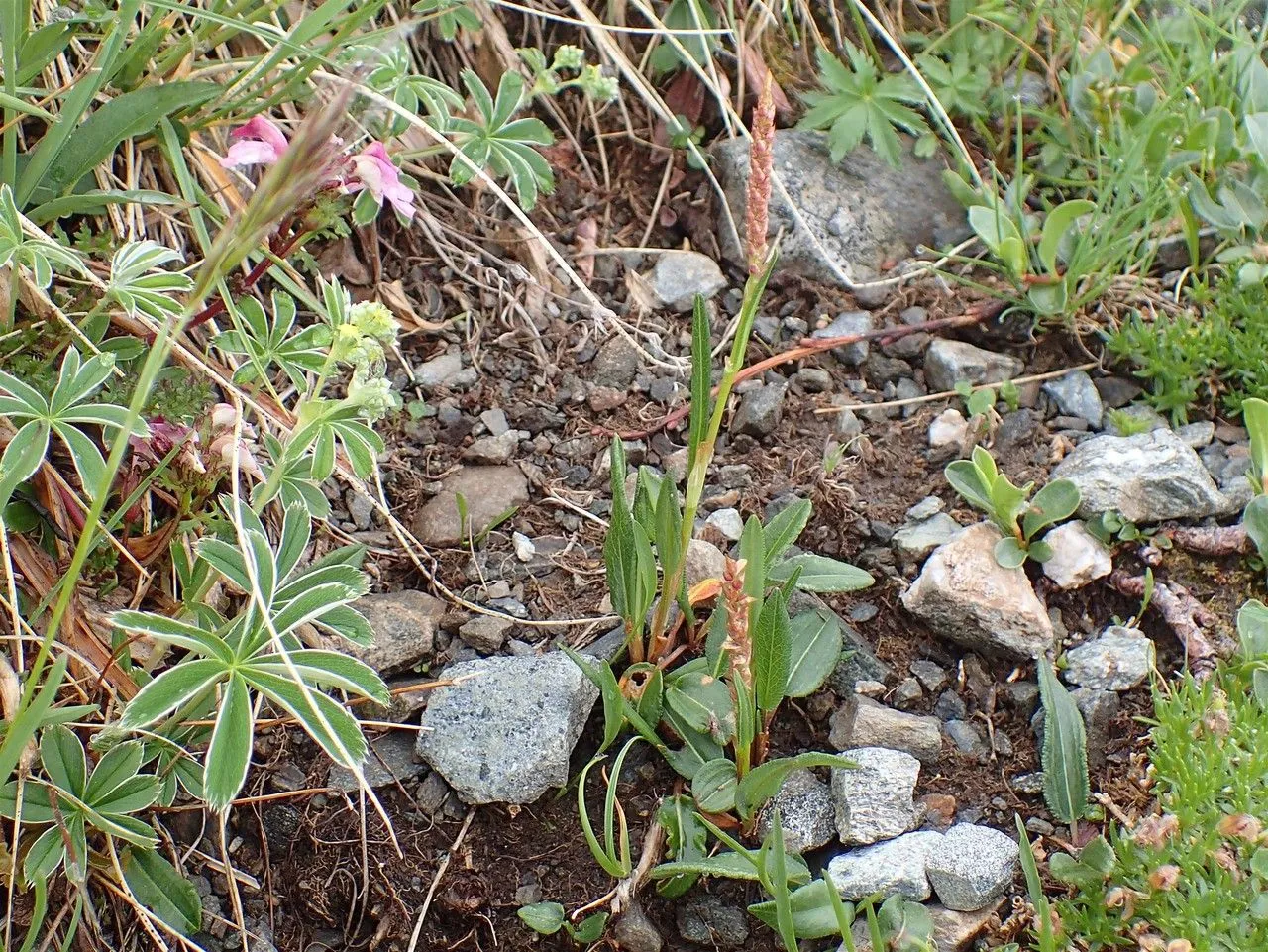
Author: (L.) Delarbre
Bibliography: Fl. Auvergne, ed. 2, 2: 516 (1800)
Year: 1800
Status: accepted
Rank: species
Genus: Bistorta
Vegetable: False
Observations: Subarctic & Subalpine
Alpine bistort, scientifically known as Bistorta vivipara, is an enduring member of the family Polygonaceae. This resilient plant thrives in the challenging climates of subarctic and subalpine regions, demonstrating an impressive adaptability to harsh environmental conditions.
Characterized by its compact growth habit, Alpine bistort often sports a single spike-like inflorescence. The flowers, usually white or pale pink, cluster densely along the spike, creating a striking yet delicate appearance amidst the rugged landscapes where the plant is found. This herbaceous perennial is particularly noted for its viviparous nature, a trait reflected in its scientific name. This means it can reproduce by developing tiny plantlets along its flower spikes, which can eventually detach and establish new plants, exemplifying a unique form of vegetative reproduction.
Alpine bistort’s leaves are another distinguishing feature. They tend to be lance-shaped and can vary in size, with basal leaves being larger and generally more rounded, while those on the stems are smaller and more elongated. This variation in leaf morphology aids the plant’s survival in the nutrient-poor soils often found in its native habitats.
Ecologically, Bistorta vivipara plays a crucial role in its ecosystem. It provides food for various mountain and tundra herbivores, including insects and small mammals, and its flowers are an important nectar source for pollinators, particularly in alpine environments where floral diversity is limited.
Historically documented in Flora Auvergne’s second edition in the year 1800 by the botanist Delarbre, Alpine bistort has been extensively studied and appreciated for its resilience and ecological significance. Its presence across a broad range indicates its successful adaptation to some of the planet’s most formidable growing conditions.
In summary, Alpine bistort is not just a plant of botanical interest but also a vital component of its natural habitat, offering insight into the remarkable biological strategies that enable life in extreme environments.
Eng: alpine bistort, alpine knotweed, serpent-grass, viviparous bistort, viviparous knotweed
Deu: knöllchen-knöterich, knöllchen-wiesenknöterich
Dan: topspirende pileurt, topspirende slangeurt
Nor: field-rug, fule-mat, hare-rug, purke-root, pærlegræs, raapaa, raape, stoort-veigræs
Ita: poligono viviparo
Sme: gieddedáđir, gieddenjuolas, njoammildáđir, šilljojuopmu
Swe: ormrot, liten ormrot
Fra: renouée vivipare
En: Alpine Bistort, Viviparous Bistort
Fi: Nurmitatar
Is: Kornsúra
No: Harerug
Cy: Canwraidd y Mynydd, Llys y Neidr Fynyddig, Neidrlys Mynyddig
Taken Jun 17, 2020 by Fanch Tounar (cc-by-sa)
Taken Jul 13, 2020 by Adrien Maloir (cc-by-sa)
Taken Jun 25, 2017 by Yoan MARTIN (cc-by-sa)
Taken Jun 25, 2017 by Yoan MARTIN (cc-by-sa)
Taken Jun 25, 2017 by Yoan MARTIN (cc-by-sa)
Taken Aug 8, 2020 by utw (cc-by-sa)
Taken Jul 7, 2022 by Jot Ess (cc-by-sa)
Taken Aug 6, 2020 by userNat (cc-by-sa)
Taken Jun 25, 2017 by Yoan MARTIN (cc-by-sa)
Taken Jul 4, 1995 by Andrew Gagg (cc-by-sa)
Taken Jun 25, 2017 by Yoan MARTIN (cc-by-sa)
Taken Jun 25, 2017 by Yoan MARTIN (cc-by-sa)
Taken Jun 25, 2017 by Yoan MARTIN (cc-by-sa)
Taken Jun 25, 2017 by Yoan MARTIN (cc-by-sa)
Taken Jun 25, 2017 by Yoan MARTIN (cc-by-sa)
Taken Jun 25, 2017 by Yoan MARTIN (cc-by-sa)
Taken Jun 25, 2017 by Yoan MARTIN (cc-by-sa)
Taken Jun 25, 2017 by Yoan MARTIN (cc-by-sa)
Ph maximum: 6.5
Ph minimum: 5.5
Light: 7
Atmospheric humidity: 8
Soil nutriments: 2
Family: Myrtaceae Author: (F.Muell.) K.D.Hill & L.A.S.Johnson Bibliography: Telopea 6: 402 (1995) Year: 1995 Status:…
Family: Rubiaceae Author: Pierre ex A.Froehner Bibliography: Notizbl. Bot. Gart. Berlin-Dahlem 1: 237 (1897) Year:…
Family: Sapindaceae Author: Koidz. Bibliography: J. Coll. Sci. Imp. Univ. Tokyo 32(1): 38 (1911) Year:…
Family: Asteraceae Author: A.Gray Bibliography: Pacif. Railr. Rep.: 107 (1857) Year: 1857 Status: accepted Rank:…
Family: Fabaceae Author: Medik. Bibliography: Vorles. Churpfälz. Phys.-Ökon. Ges. 2: 398 (1787) Year: 1787 Status:…
Family: Aspleniaceae Author: (Cav.) Alston Bibliography: Bull. Misc. Inform. Kew 1932: 309 (1932) Year: 1932…